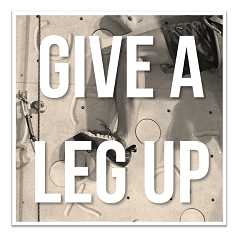 Noticing body language:
Noticing body language:
Your mission is to norm at least three completely different "types" of people. Look for at least one of each of the following types: shy, powerful/confident, and arrogant/aggressive.
In a notebook, draw a stick figure of each of the people you are norming. Now use a Head/Shoulders/Knees/Toes model to scan each. Write a one- or two-word observation next to the corresponding areas of the body (such as, "head back, nose slightly up, shoulders slumped forward, hip tilted to the left side, hands on hips, feet two feet apart"). Allow yourself to write with plenty of detail, but limit yourself to two to ten minute of observation for each person.
Once you've done this exercise on paper today, continue throughout the week without writing it down. Practice this exercise often enough and you'll start doing it automatically-which is the goal.


 Never assume you know what your customers want.
Never assume you know what your customers want.  The reason inclusion is so important is simple: When everyone matters and everyone knows he or she matters, employees are happy to come to work, and they're eager to give you their energy, creativity, and loyalty. On the other hand, when people don't feel included, they become apathetic and perform at less than their full capacity. To put it simply, all people want exactly what you want. You want to be included, listened to, respected, and involved, don't you? You want to be asked your opinion and have it taken seriously. You want to feel valued. And you want to be known as an individual and treated as such. Well, so does everyone else. That's why great leaders make sure that everyone in the workplace-no matter the rank or position-feels included and no one feels left out.
The reason inclusion is so important is simple: When everyone matters and everyone knows he or she matters, employees are happy to come to work, and they're eager to give you their energy, creativity, and loyalty. On the other hand, when people don't feel included, they become apathetic and perform at less than their full capacity. To put it simply, all people want exactly what you want. You want to be included, listened to, respected, and involved, don't you? You want to be asked your opinion and have it taken seriously. You want to feel valued. And you want to be known as an individual and treated as such. Well, so does everyone else. That's why great leaders make sure that everyone in the workplace-no matter the rank or position-feels included and no one feels left out. What is the difference between a stall and an objection? A stall is, "I want to think about it," or "I have to meet with other people." An objection is, "Your price is too high," or "We have a satisfactory supply." Both are putoffs which basically say, "You haven't sold me yet." The bottom line is conversion. You have to convert their lack of confidence, their lack of trust, and their lack of perceived value into a sale.
What is the difference between a stall and an objection? A stall is, "I want to think about it," or "I have to meet with other people." An objection is, "Your price is too high," or "We have a satisfactory supply." Both are putoffs which basically say, "You haven't sold me yet." The bottom line is conversion. You have to convert their lack of confidence, their lack of trust, and their lack of perceived value into a sale. When you look for the positive qualities of your challenging customer, you increase your ability to connect with that customer and enjoy your time together. How you think about your customers influences how you respond to them. When you begin noticing the positive qualities, your clients will start responding to your differently, because how you act is determined by how you think.
When you look for the positive qualities of your challenging customer, you increase your ability to connect with that customer and enjoy your time together. How you think about your customers influences how you respond to them. When you begin noticing the positive qualities, your clients will start responding to your differently, because how you act is determined by how you think. Training can launch an ongoing strategy. It can teach people service behaviors, empower them, reward their involvement, and initiate ongoing processes for building customer loyalty. But company efforts
Training can launch an ongoing strategy. It can teach people service behaviors, empower them, reward their involvement, and initiate ongoing processes for building customer loyalty. But company efforts